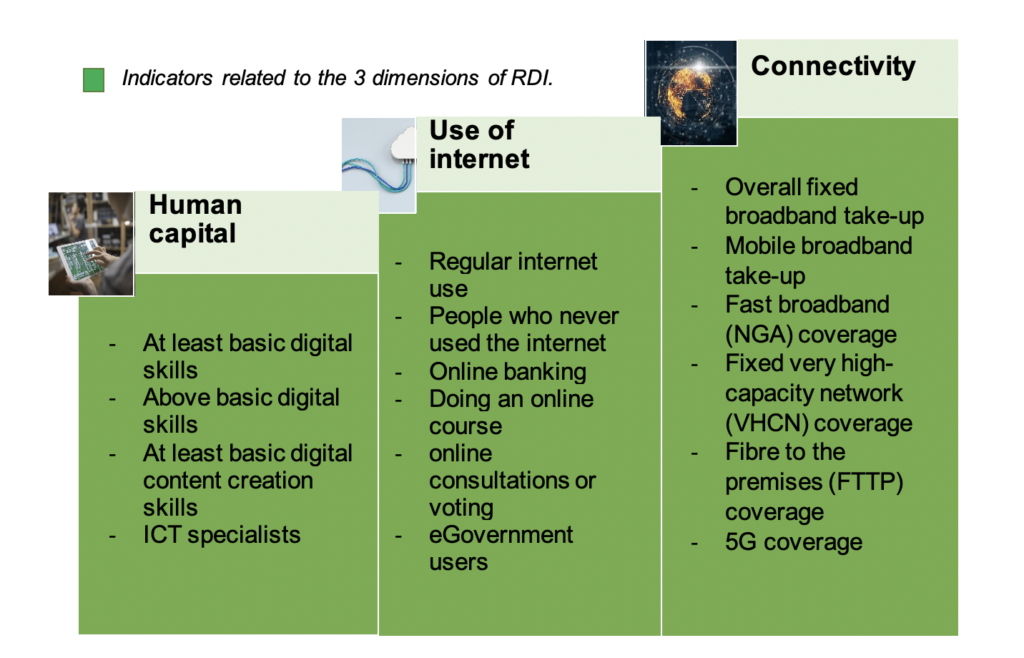
What do we know about the rural digital index (RDI)
Written by Felicitas Okoye
The Rural Digital Index (RDI) is part of the European Union Action Plan for a rural digital future, to measure the progress of the rural area geared towards closing the digital gap between rural and urban areas and to identify focus area for policy and investment. RDI is developed from the re-arrangement of the existing indicators in the Digital Economy and Society Index (DESI) which was introduced in 2014. The Rural Digital Index (RDI) is measured across 3 dimensions which include: connectivity, human capital, and use of internet and some indicators as described in Figure 1 that also share the key 5 dimensions measured with DESI (connectivity, human capital, use of internet, integration of digital technology and digital public services).

Source: European Commission
The shortcomings of the RDI:
- In terms of the density of the area, there should be breakdown of the indicators into rural and urban areas to allow for comparison.
- As an action set for rural digital future, introduction and uptake of digital innovation and new technologies such as artificial intelligence, robotics, Internet of Things (IoT) solutions and Digital Innovation Hubs will contribute to the development of rural areas. We cannot measure the progress of digitalization of business and the adoption of digital technology in rural areas with the exclusion of the “Integration of digital technology” in the rural digital index.
- The progress report about the digital performance of rural areas in the EU countries is out of the question because of the availability of data only for the year 2021.
Thus, we can analyze the indicators on EU’s rural digital performance and compare countries using the link. The graph below shows the position of each member state of the European Union in terms of rural digital performance. Netherlands has the highest score (74.7), Bulgaria the lowest (22.8 score), European Union (44.3score) and Italy (43.3score).


